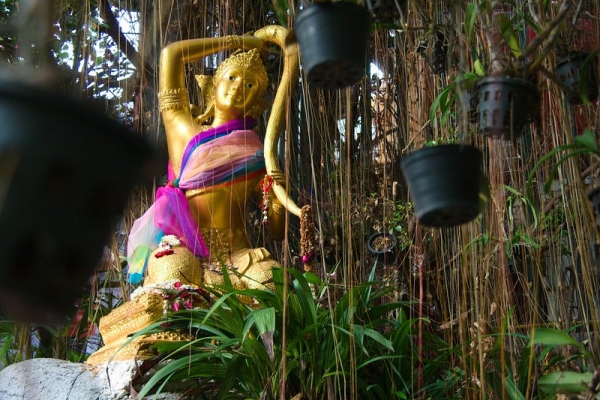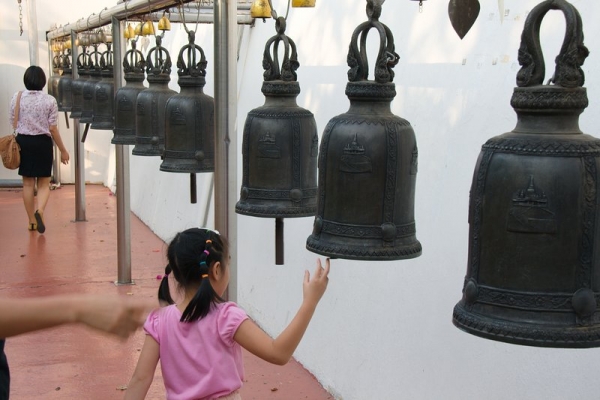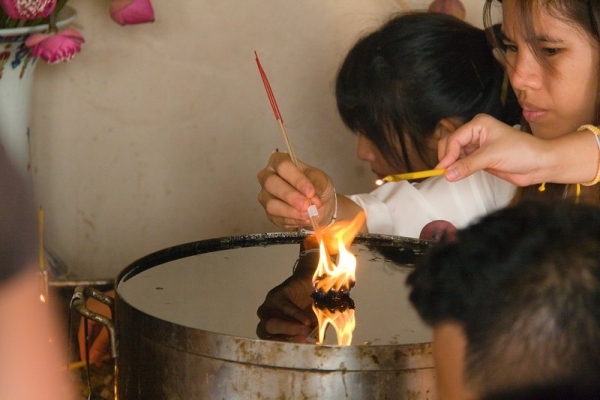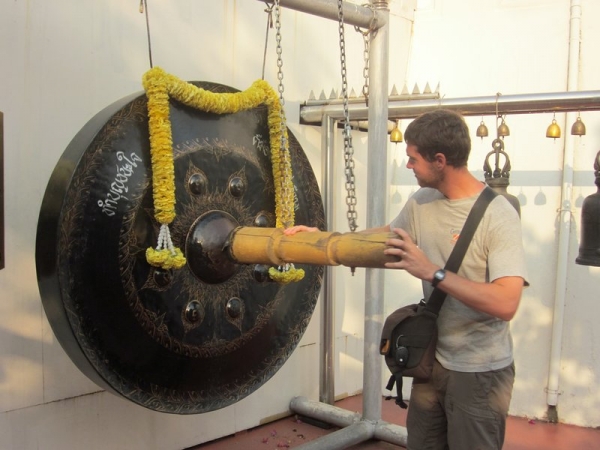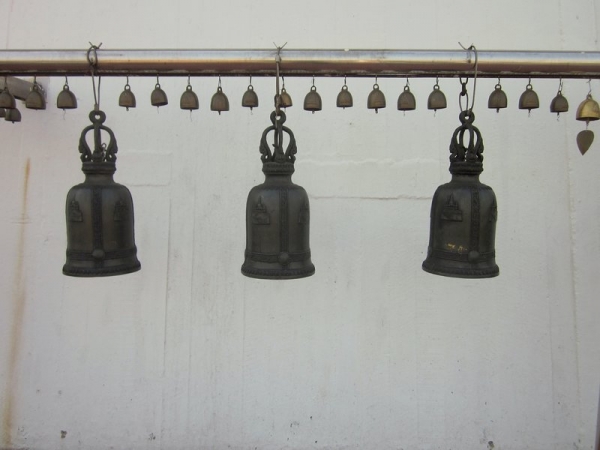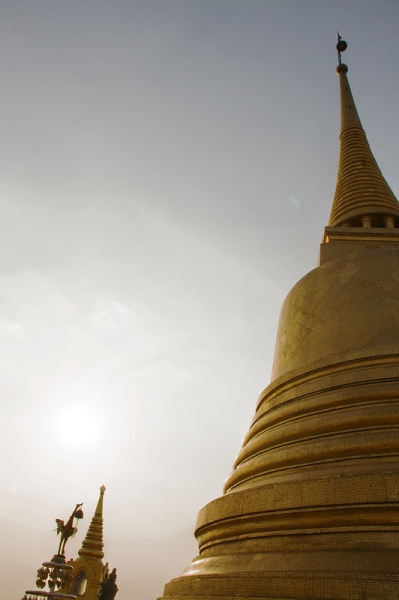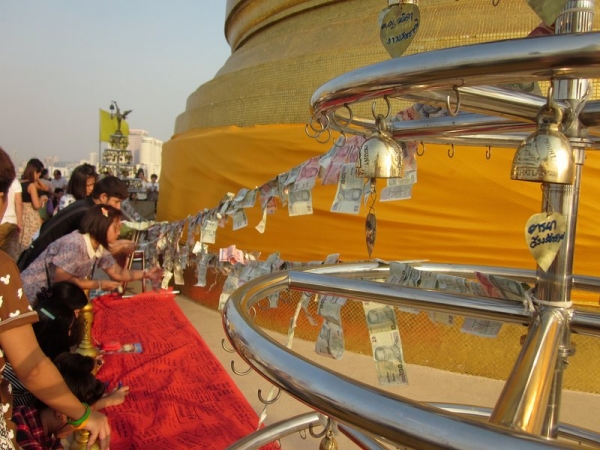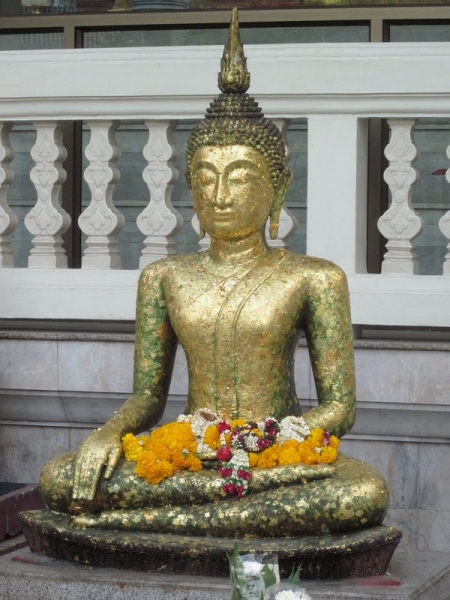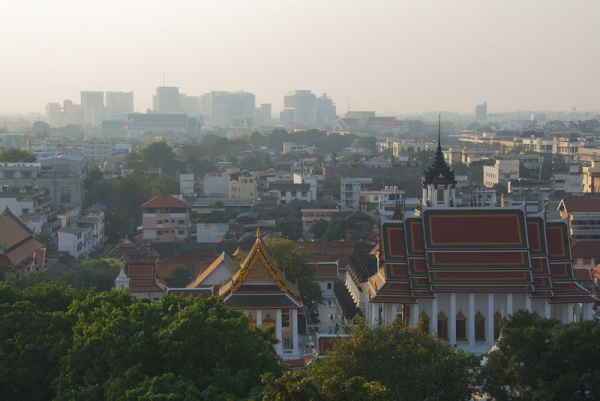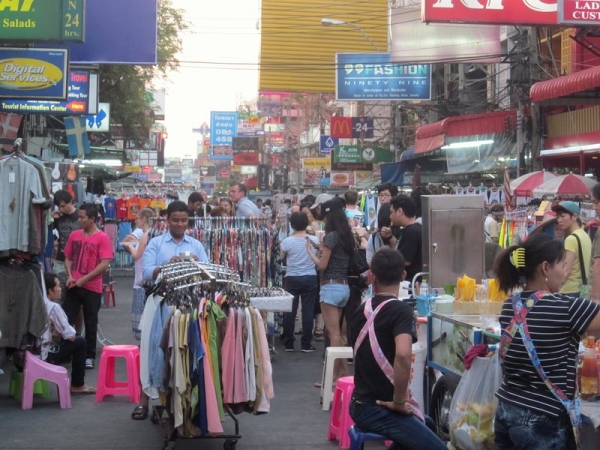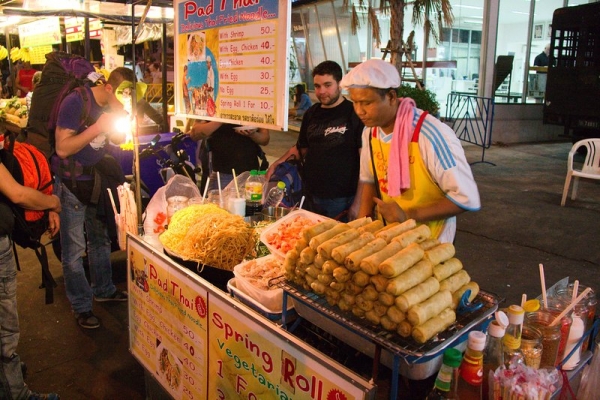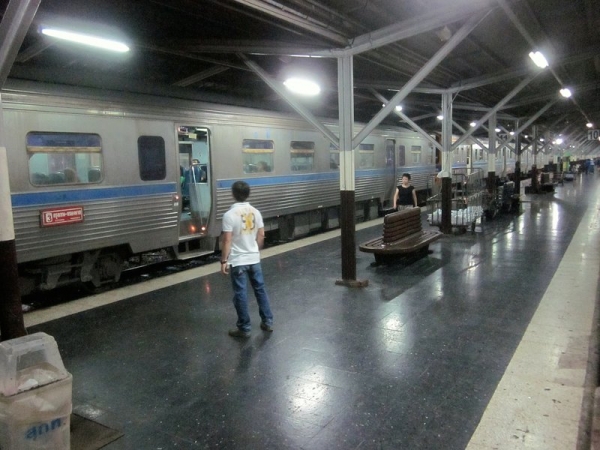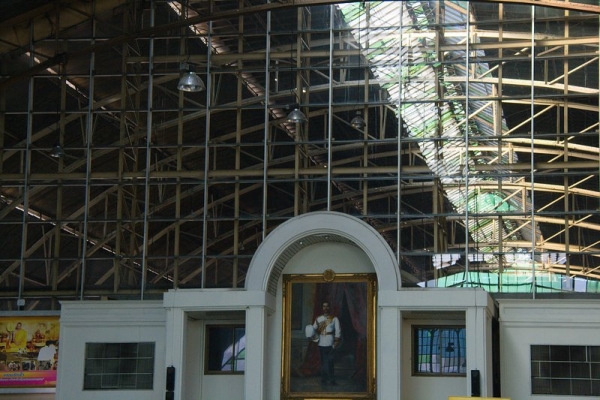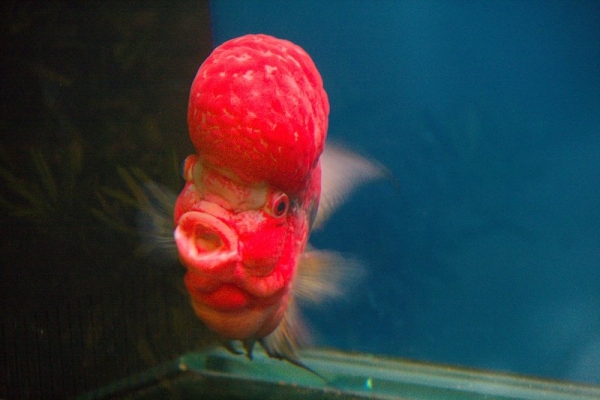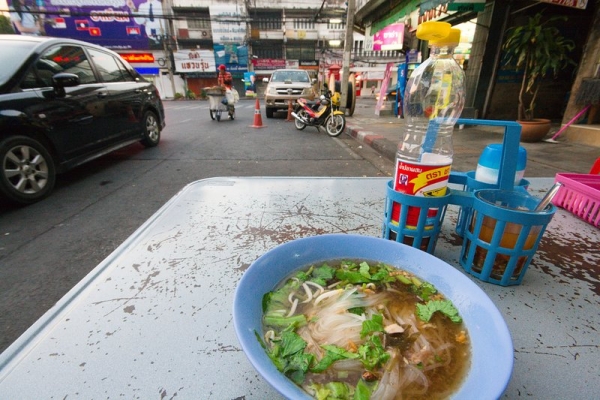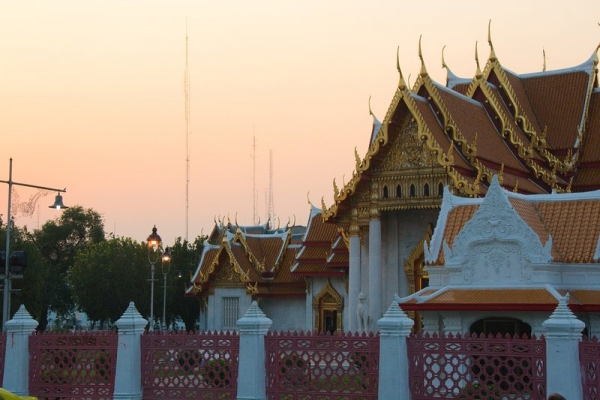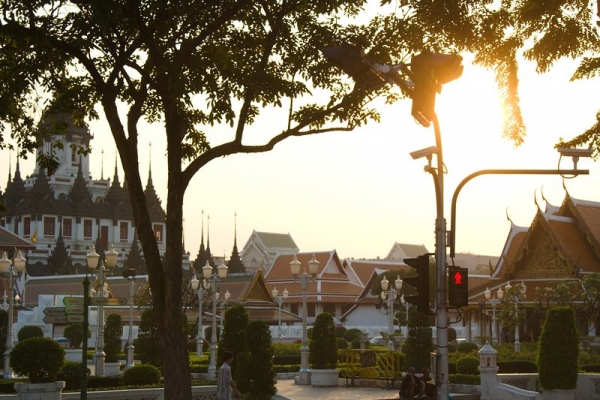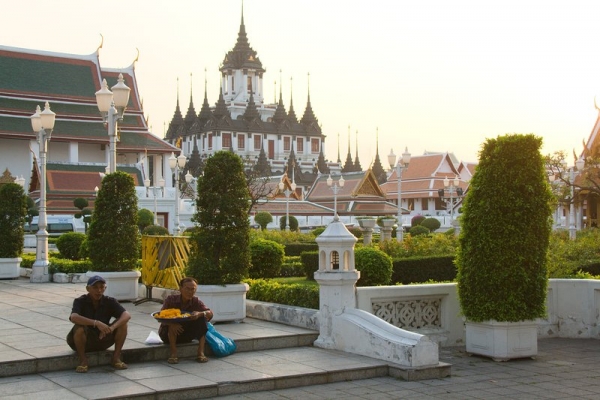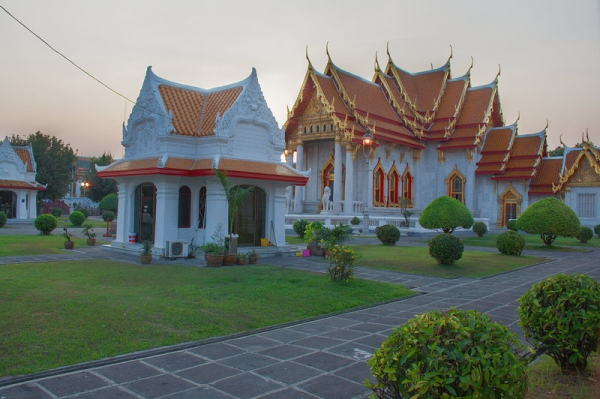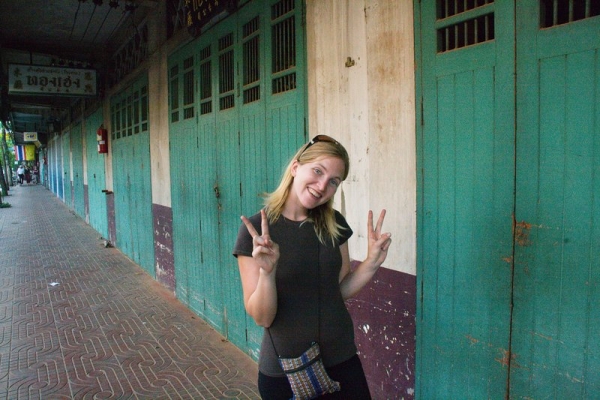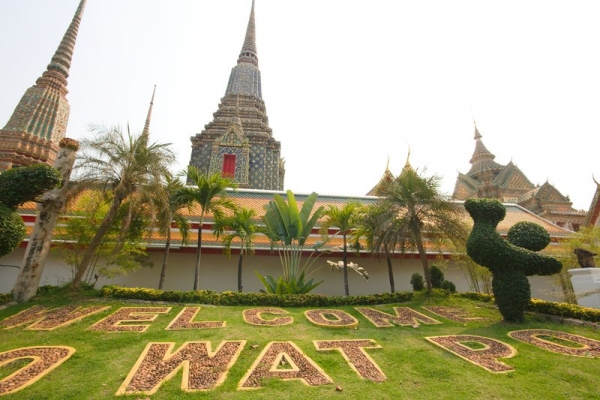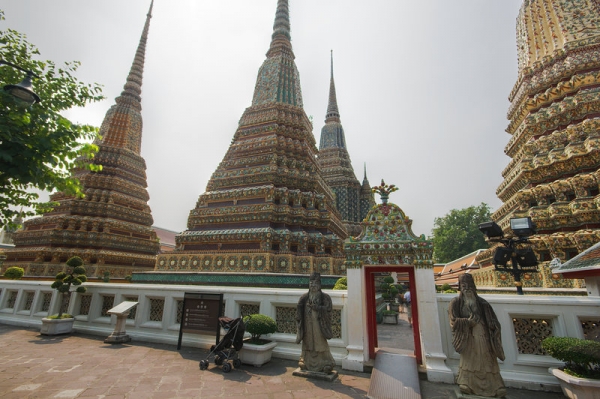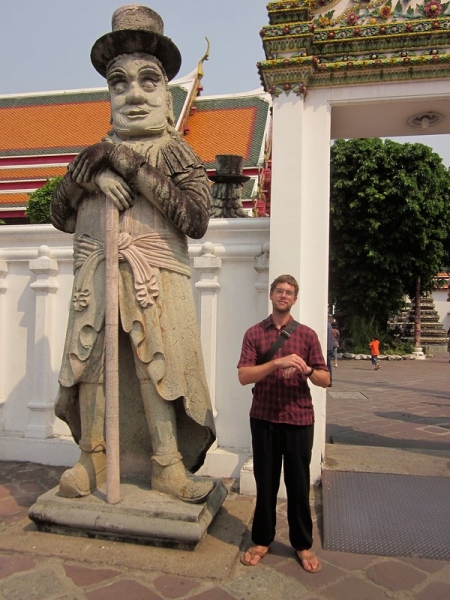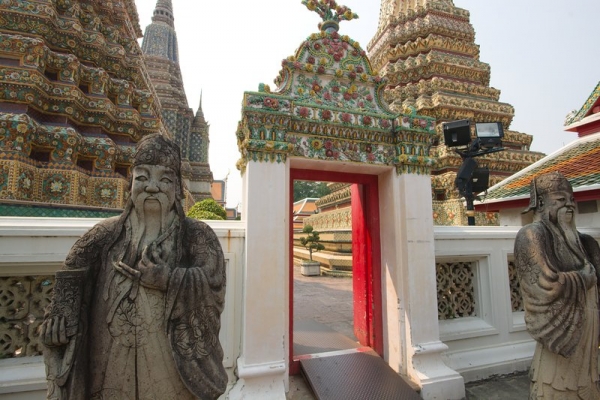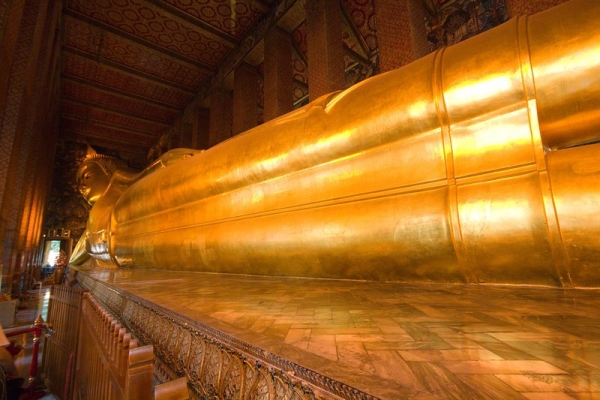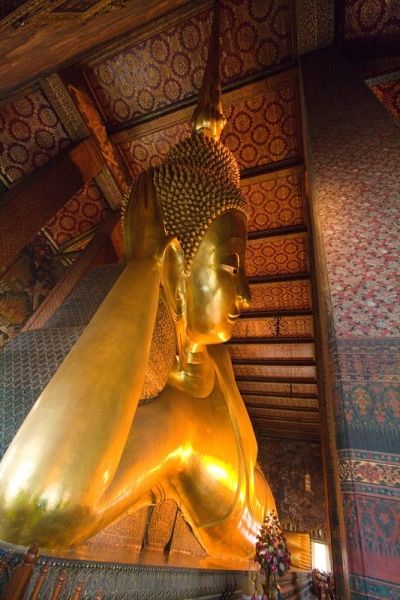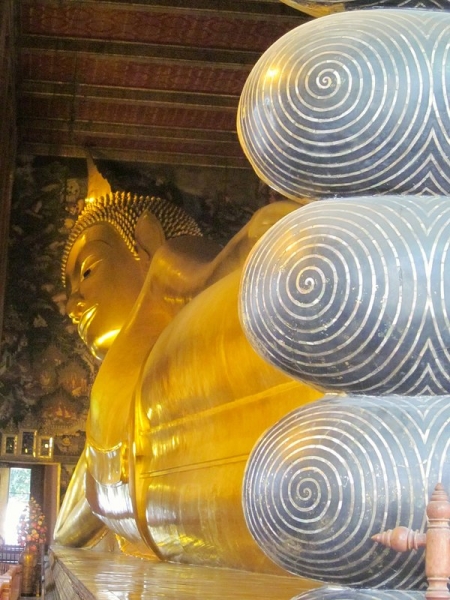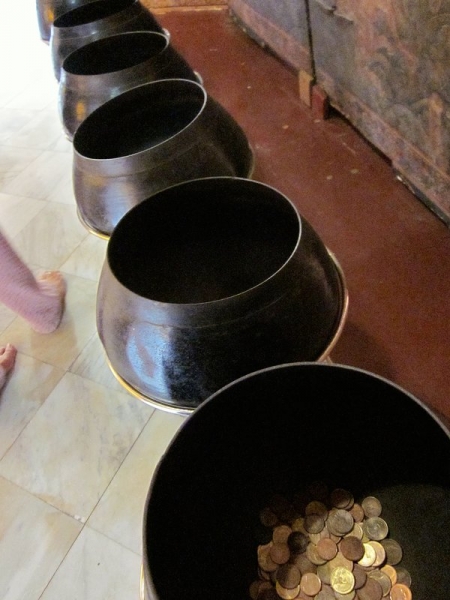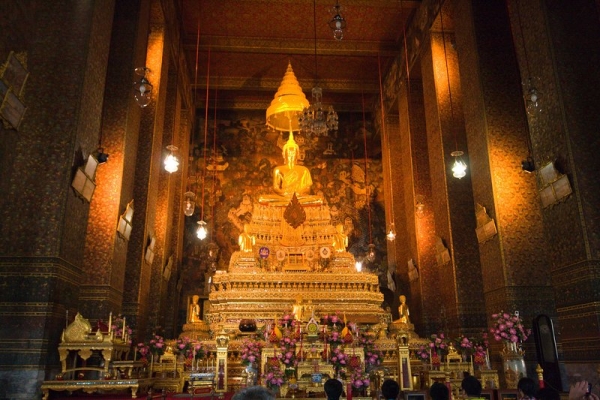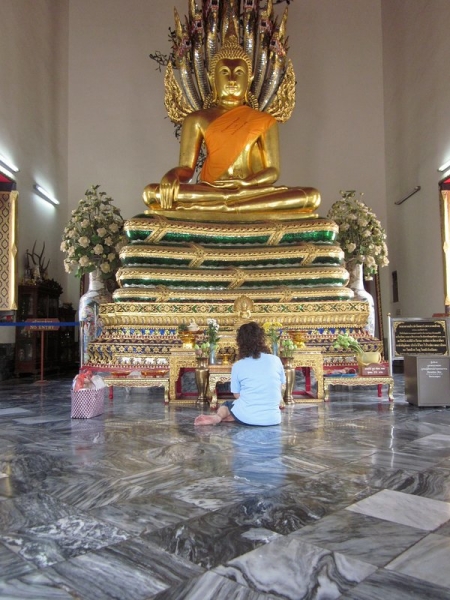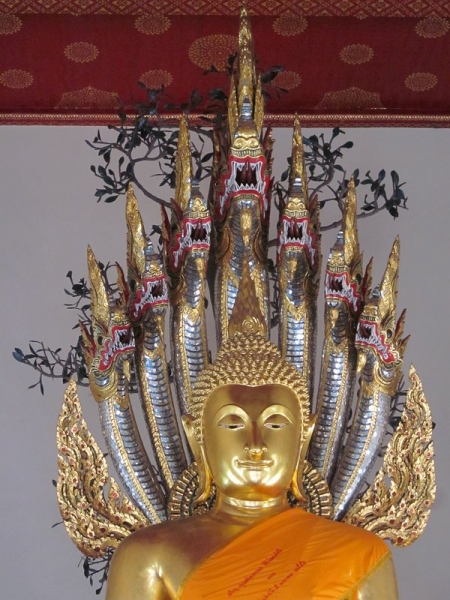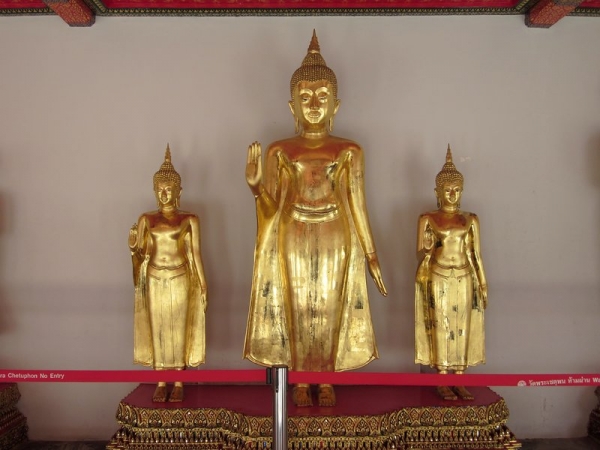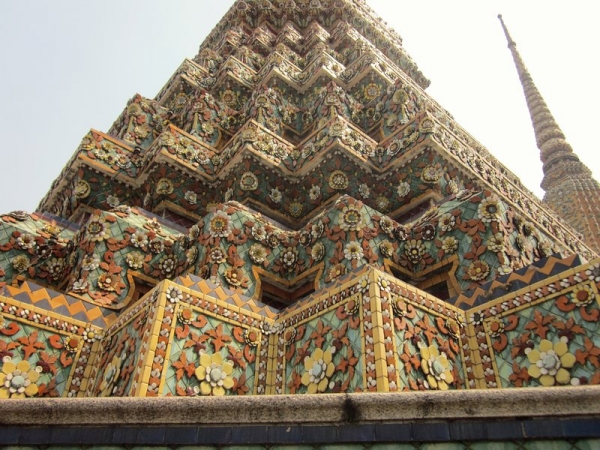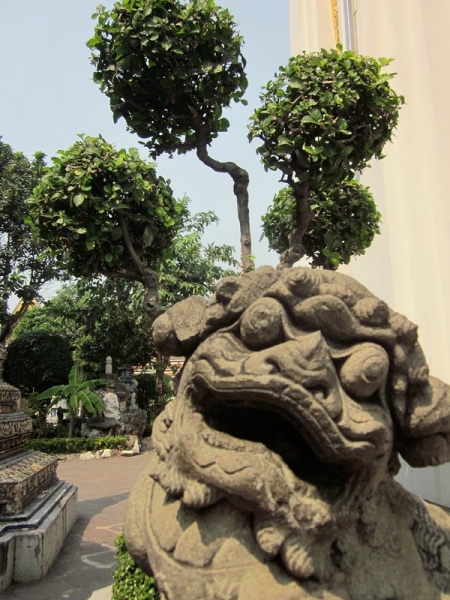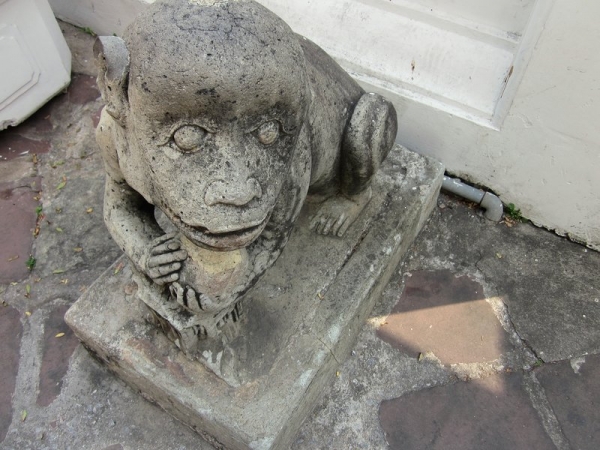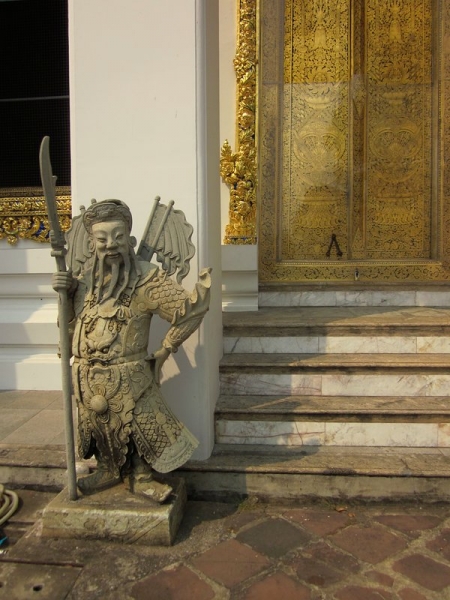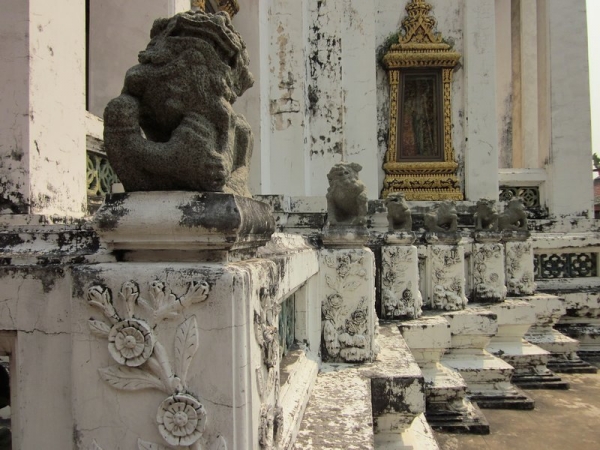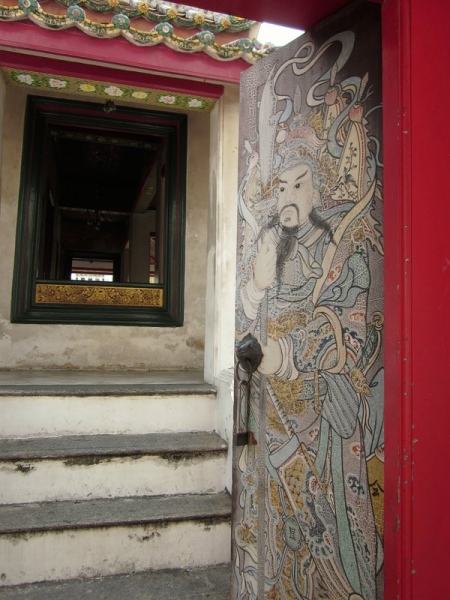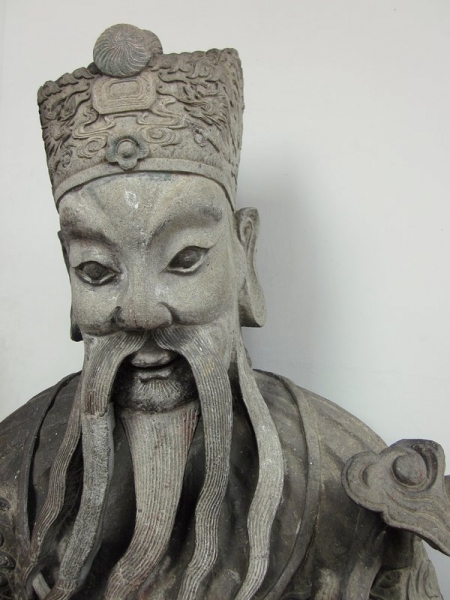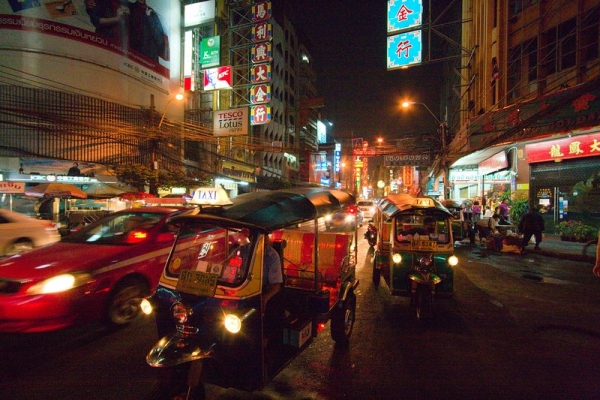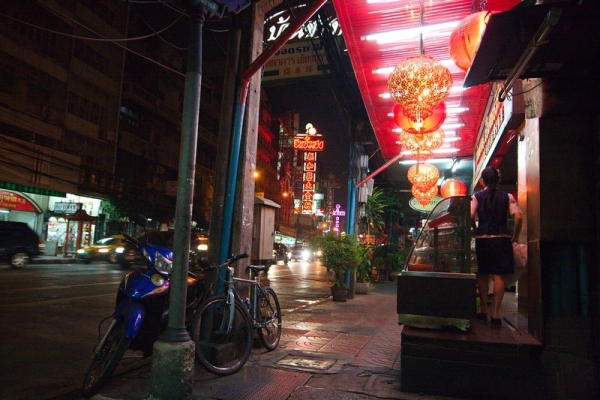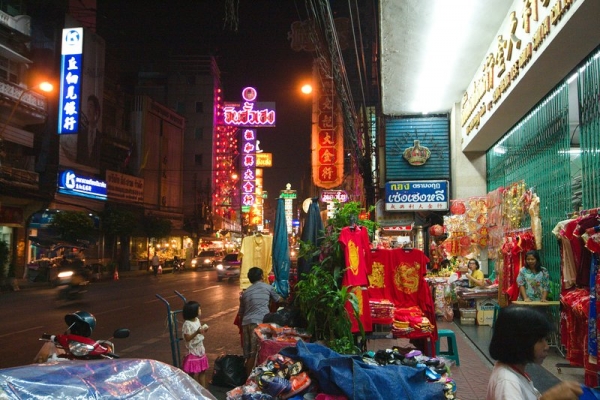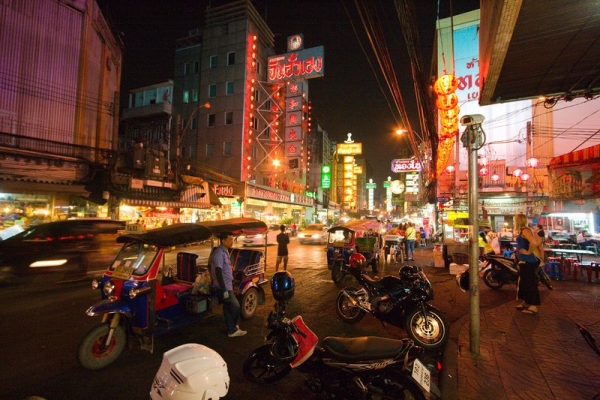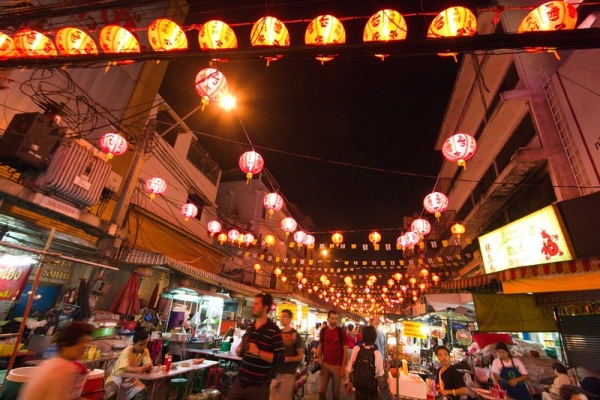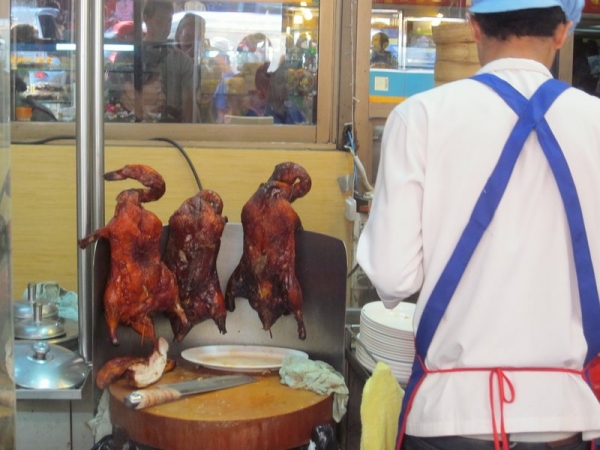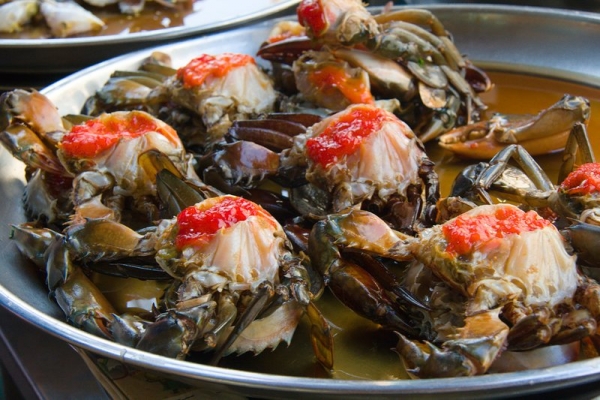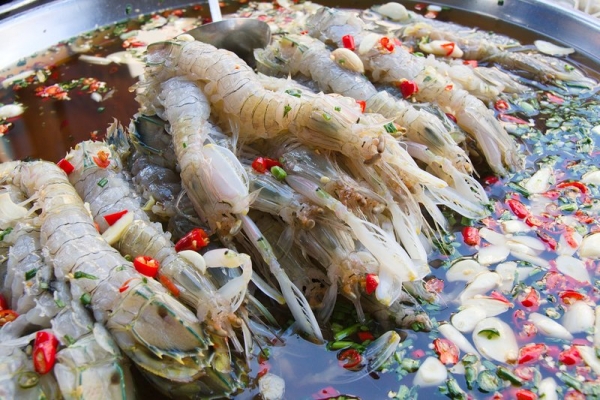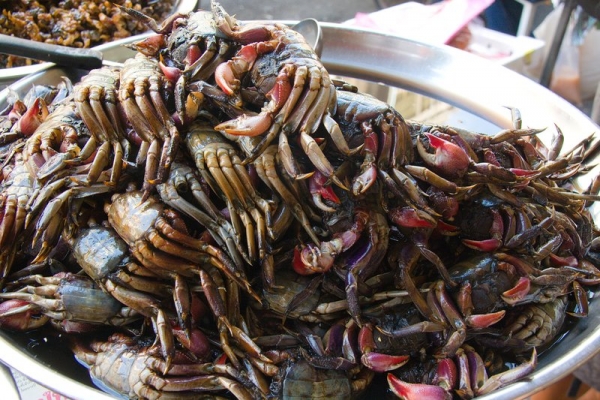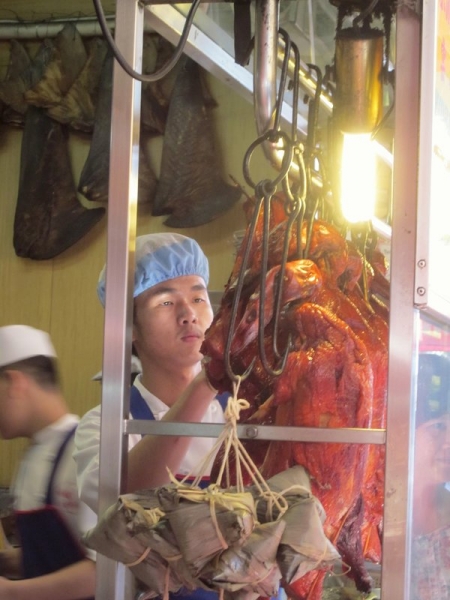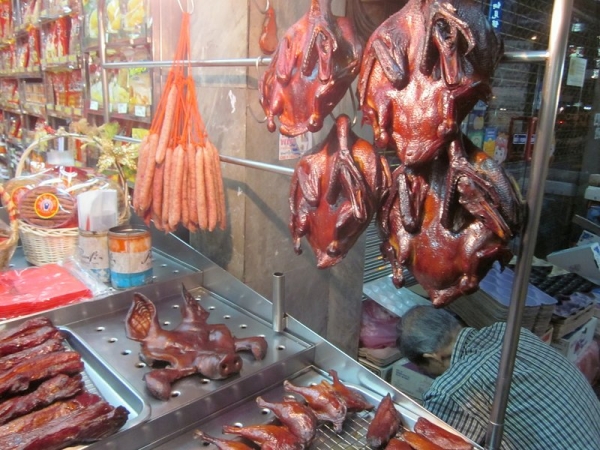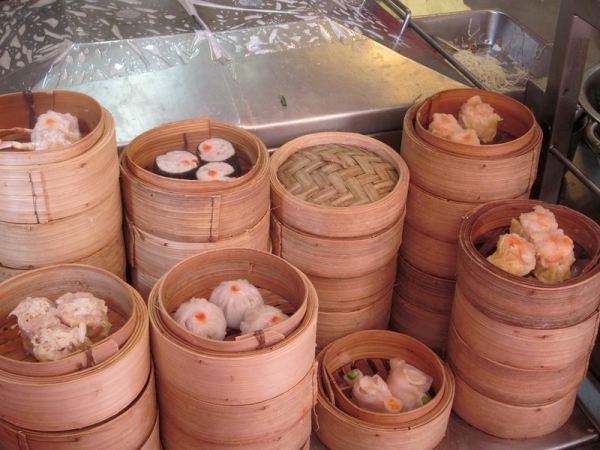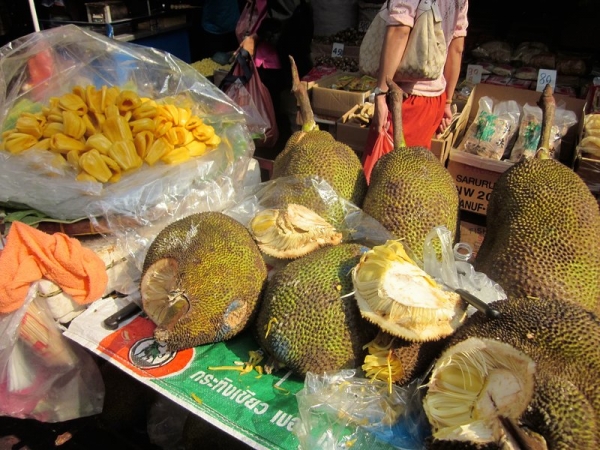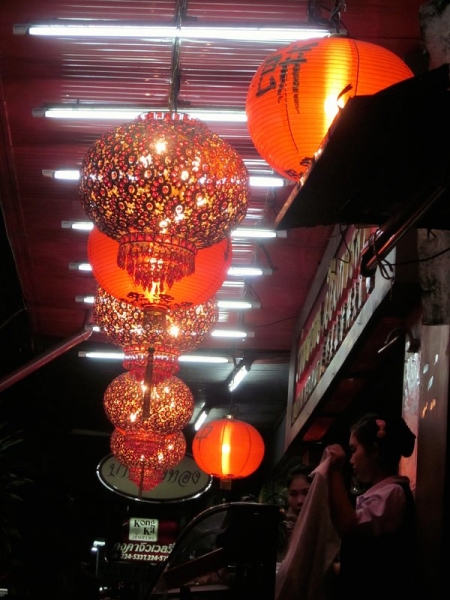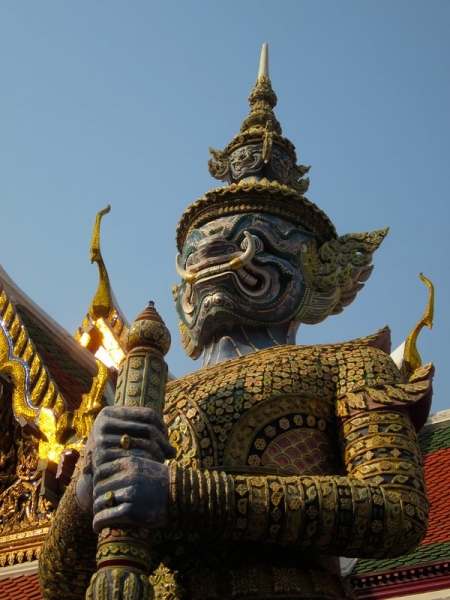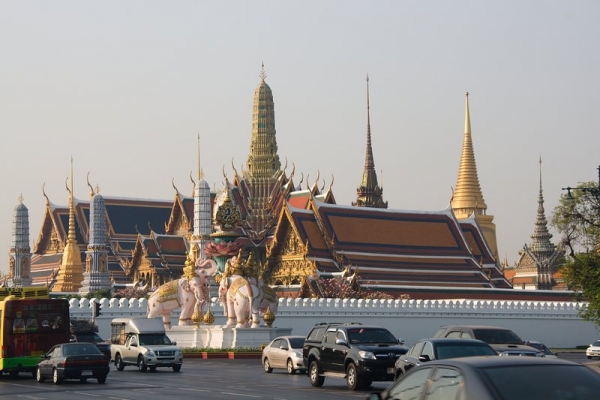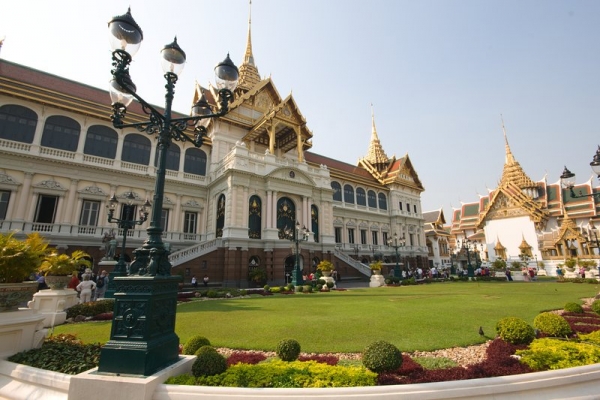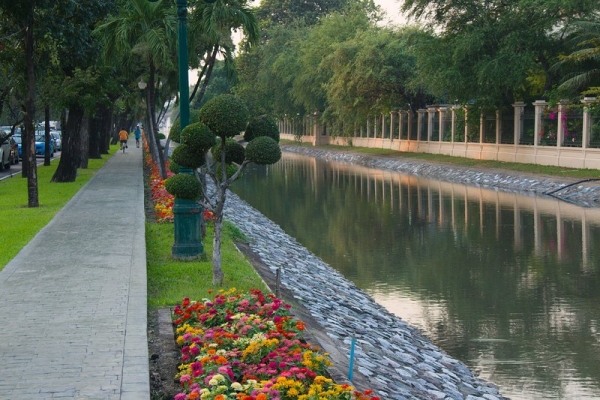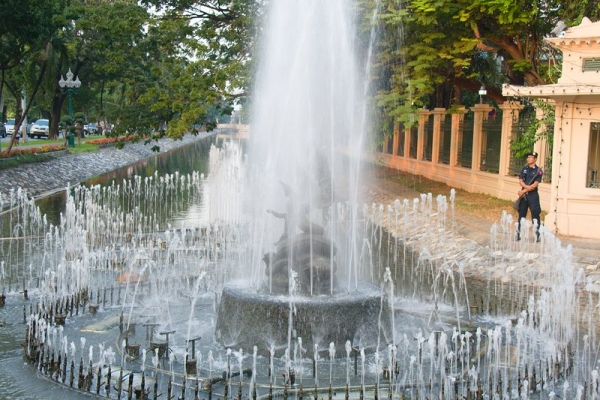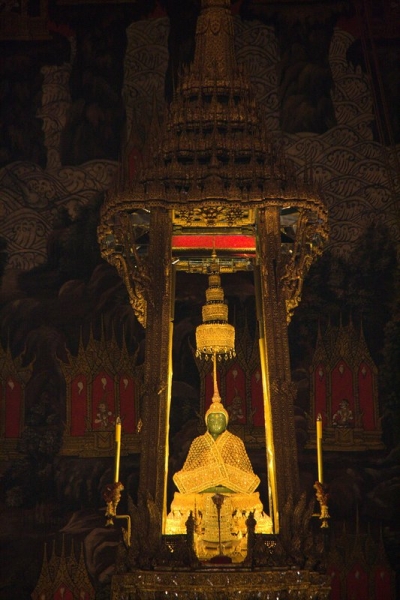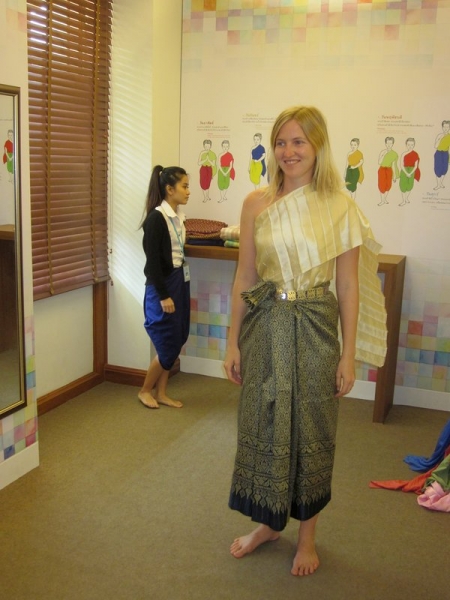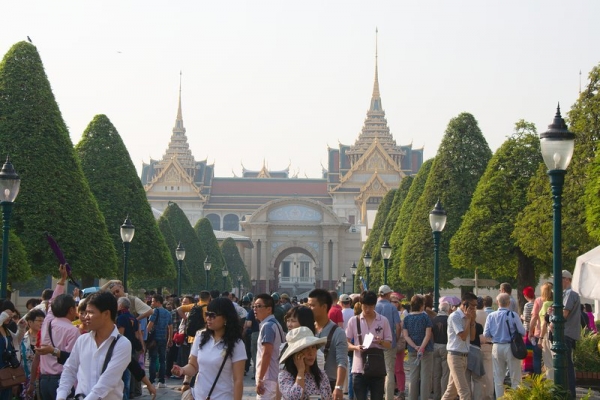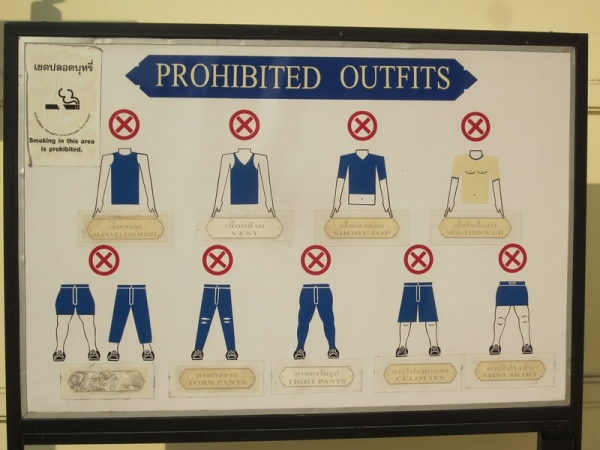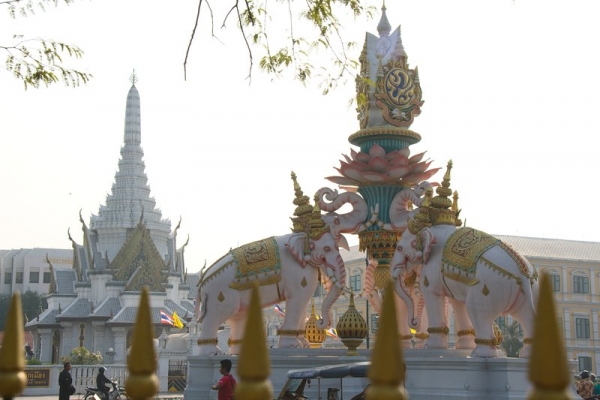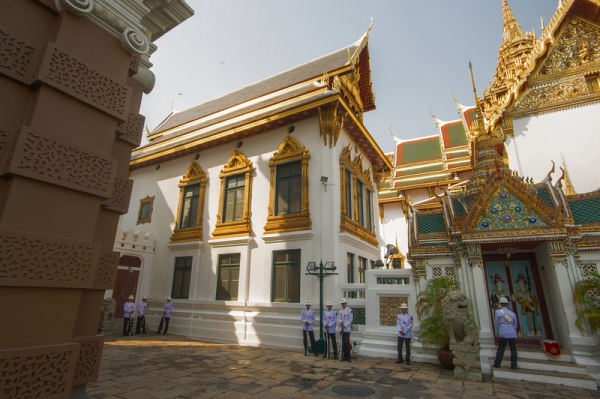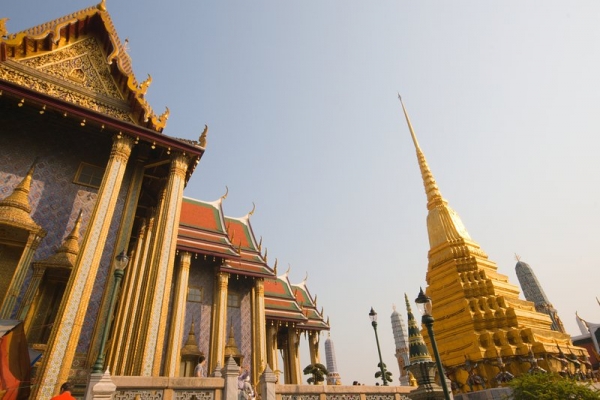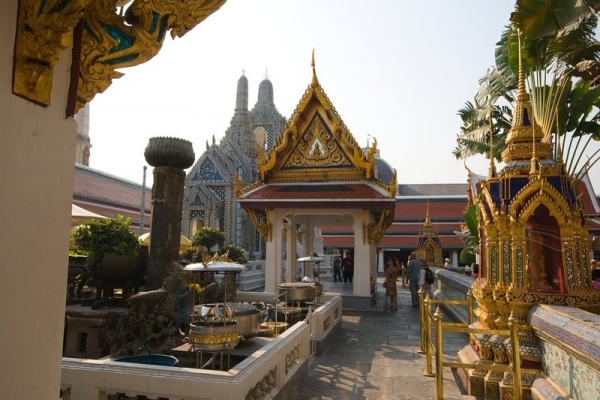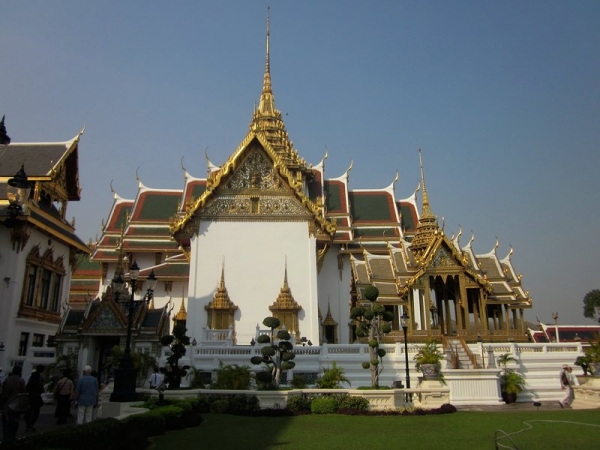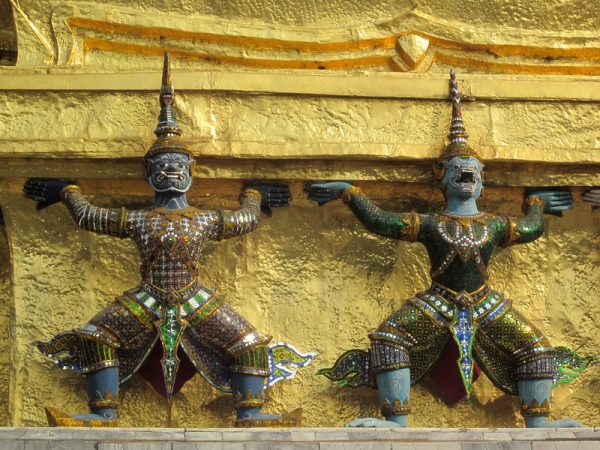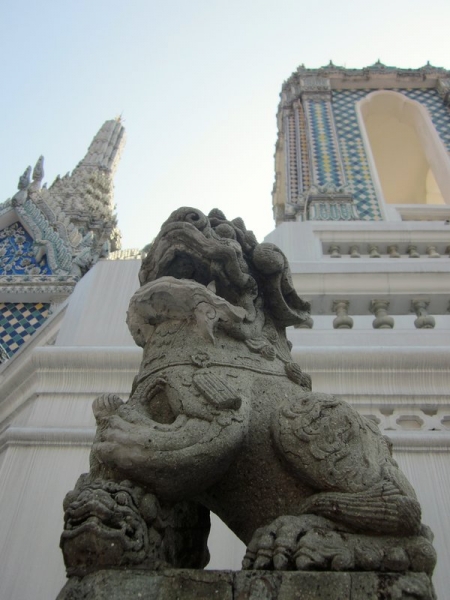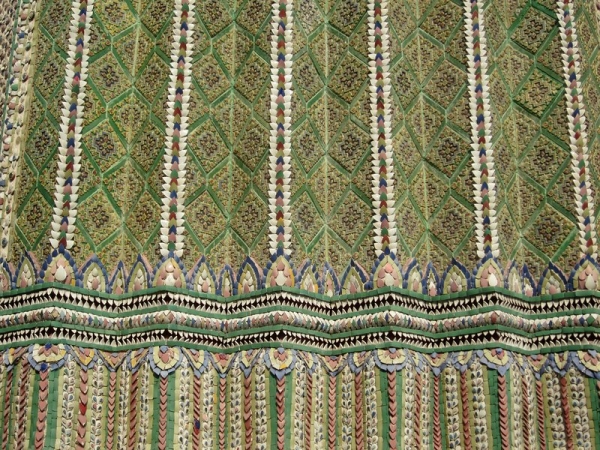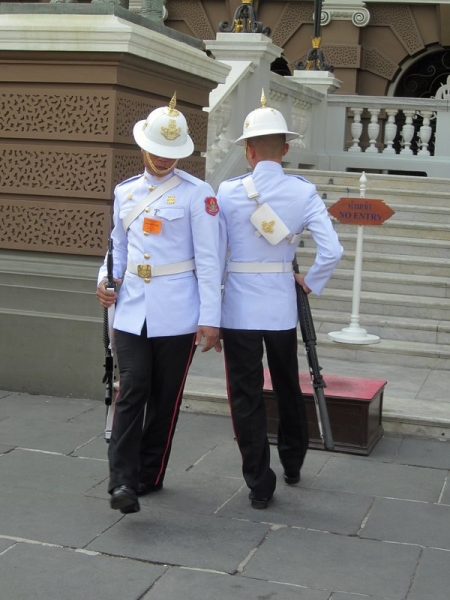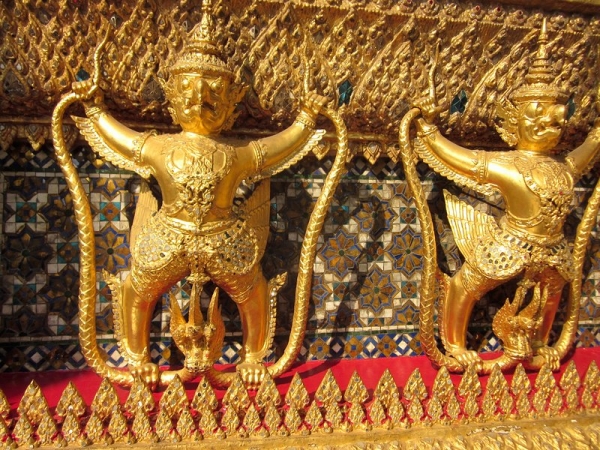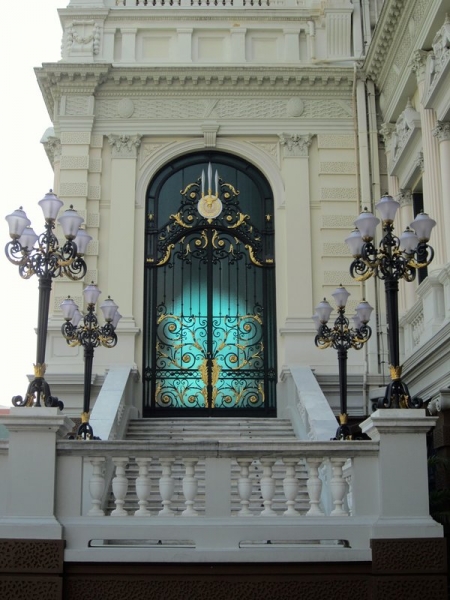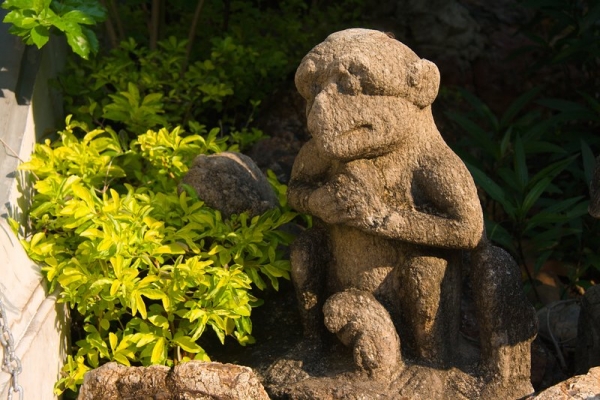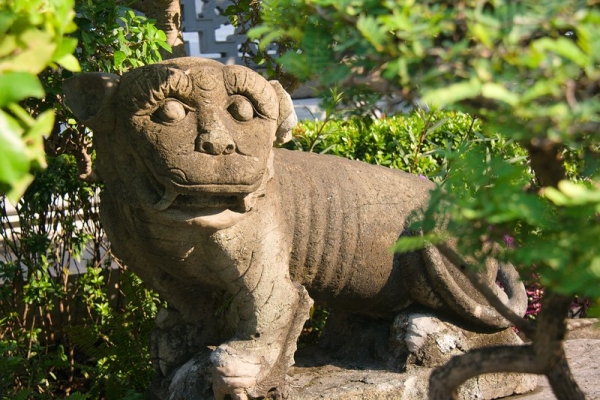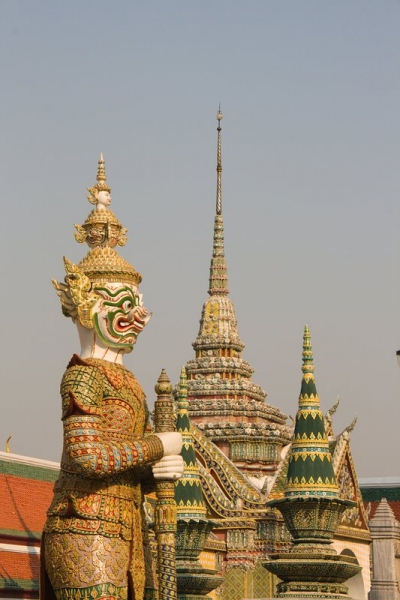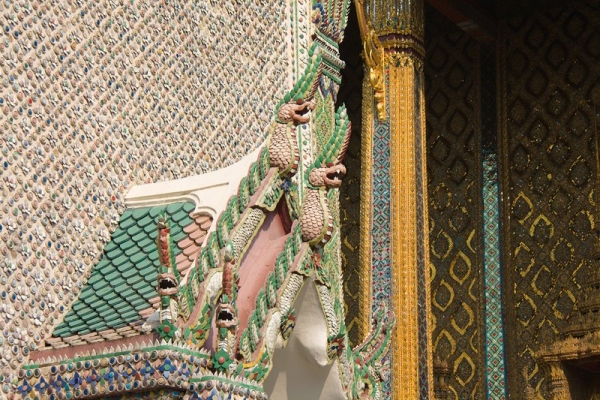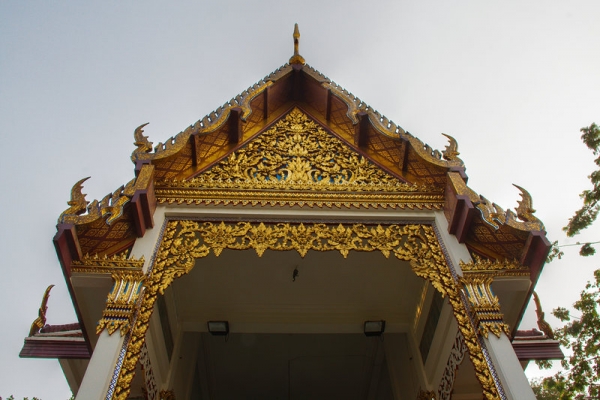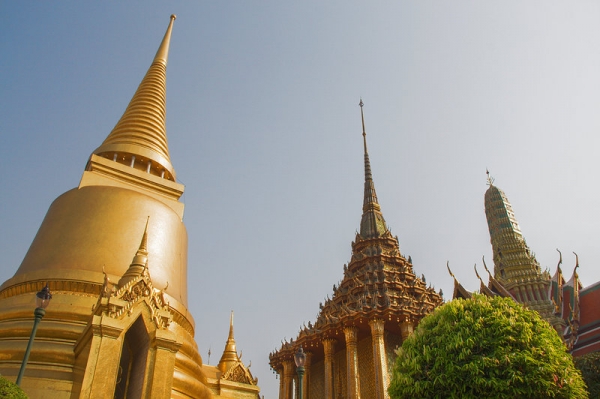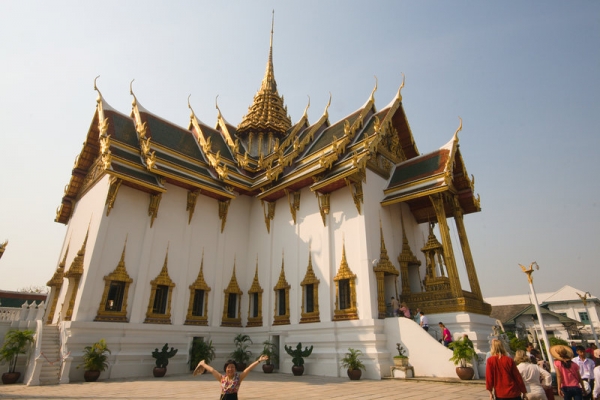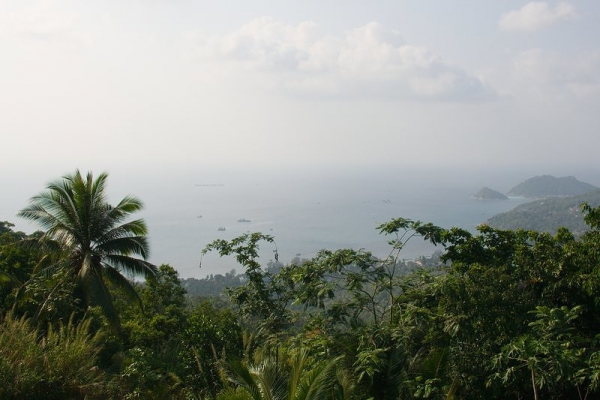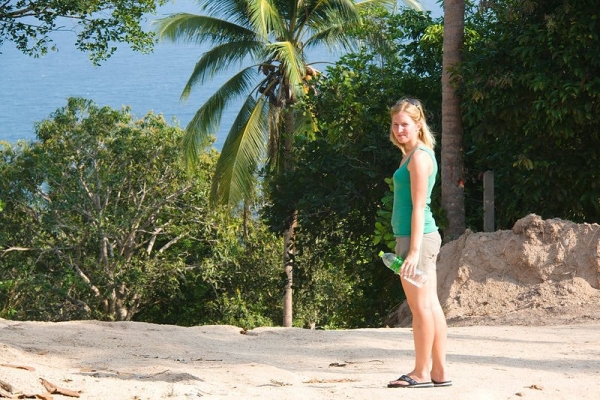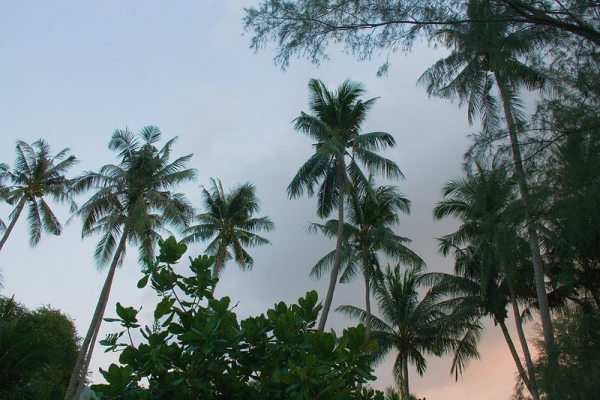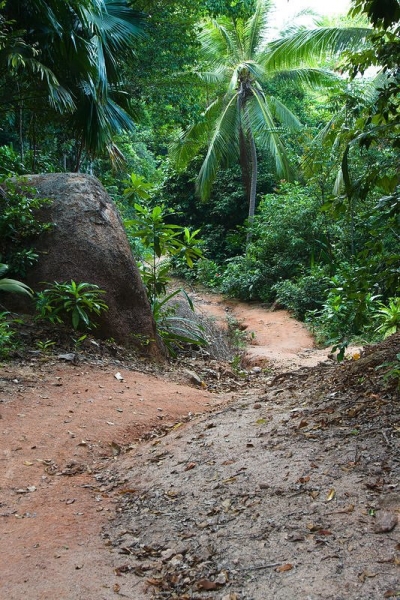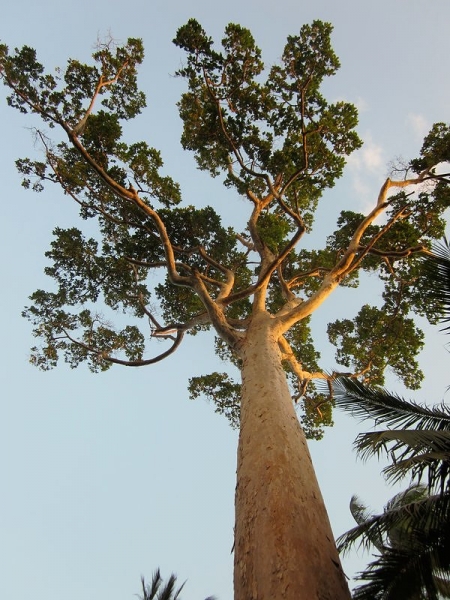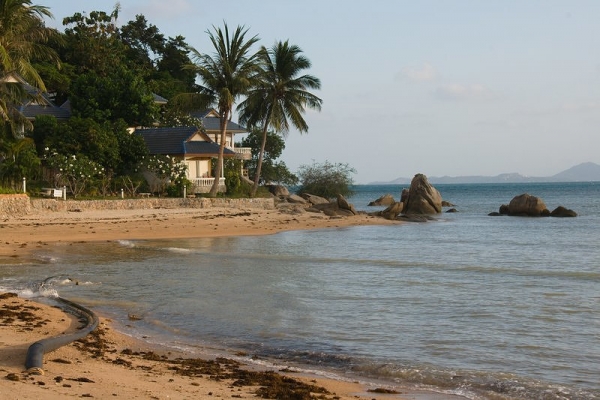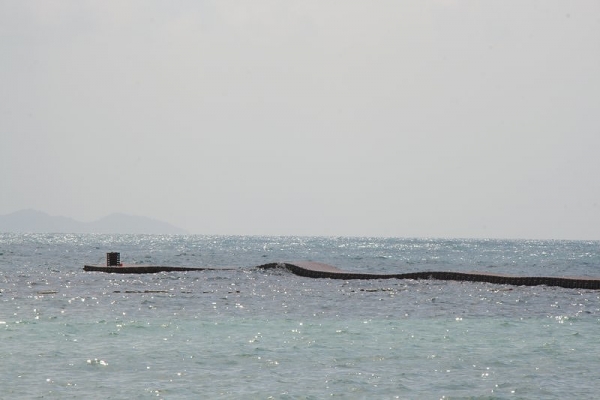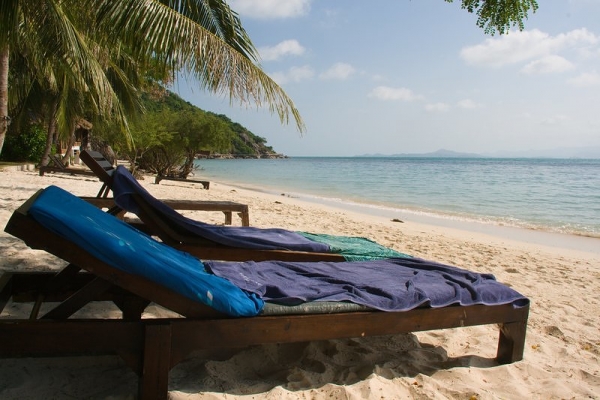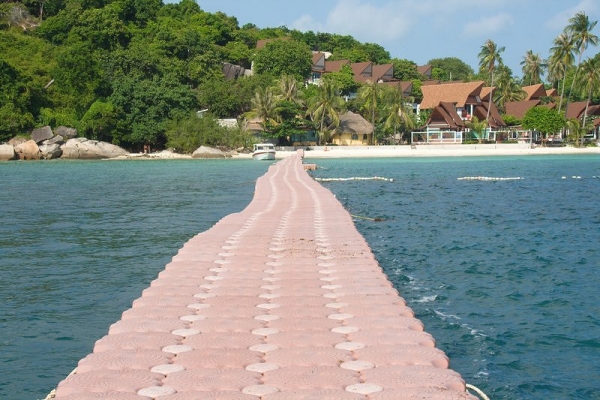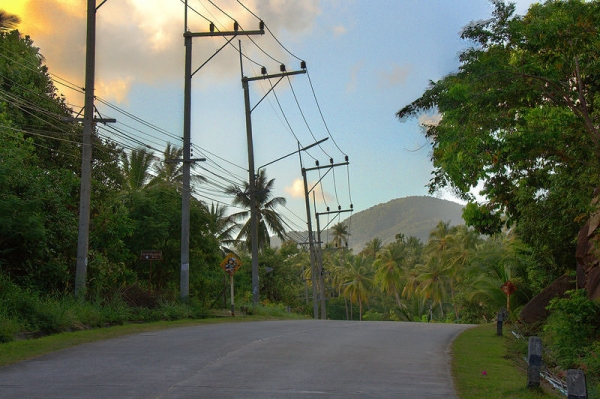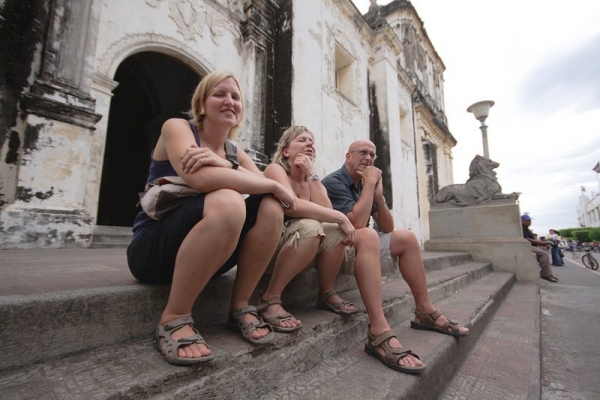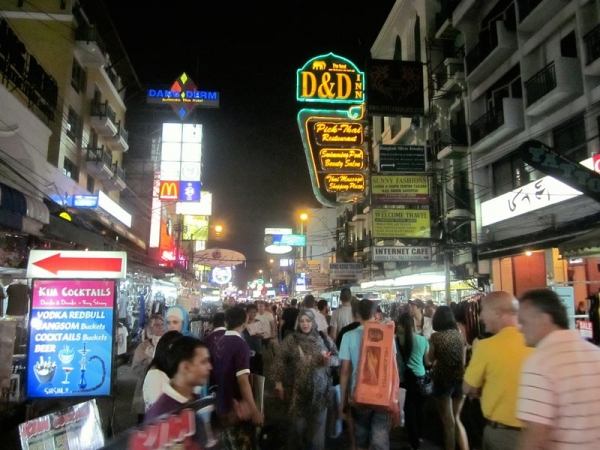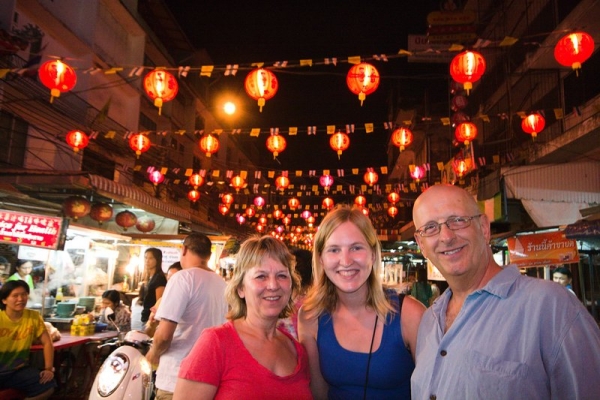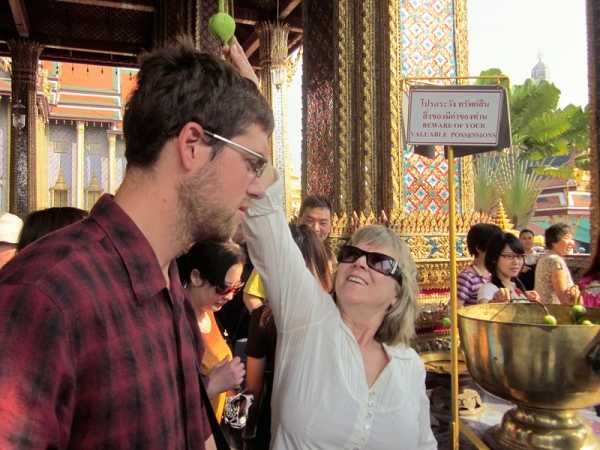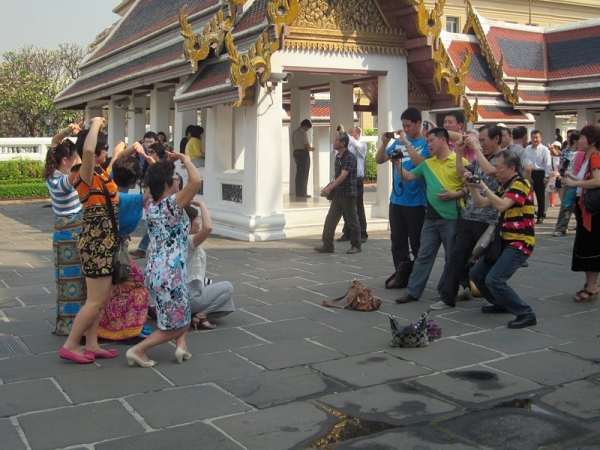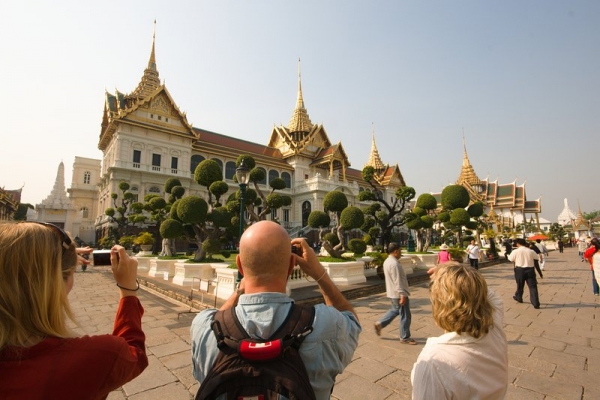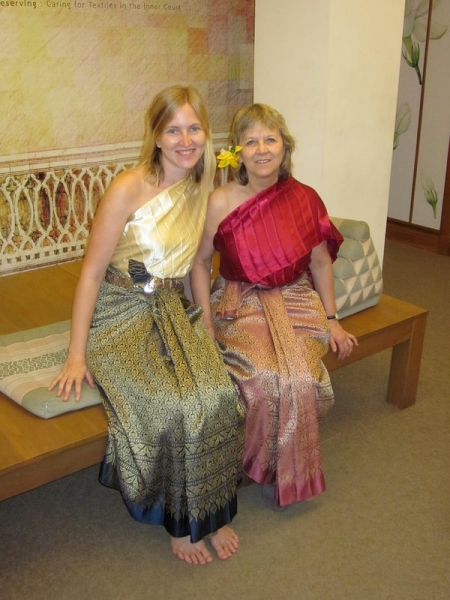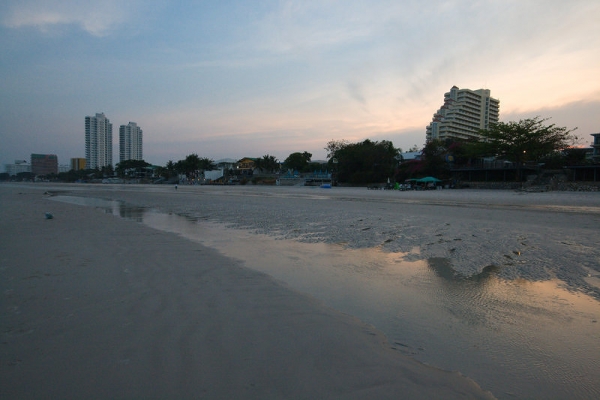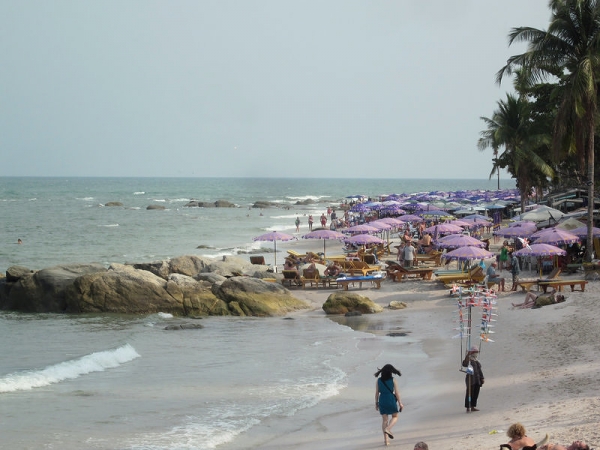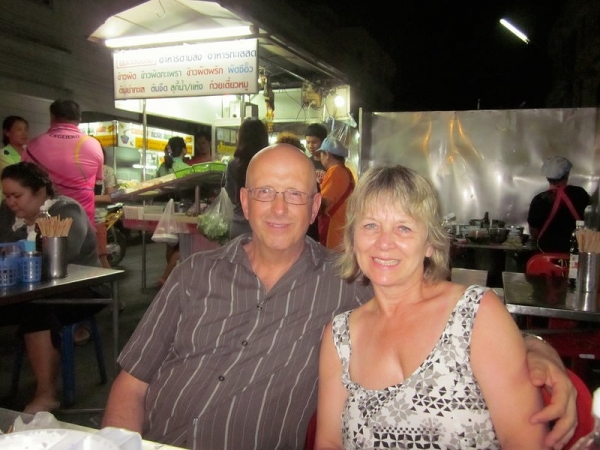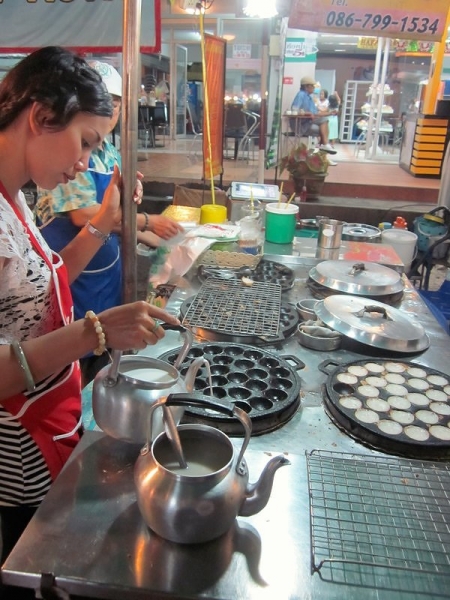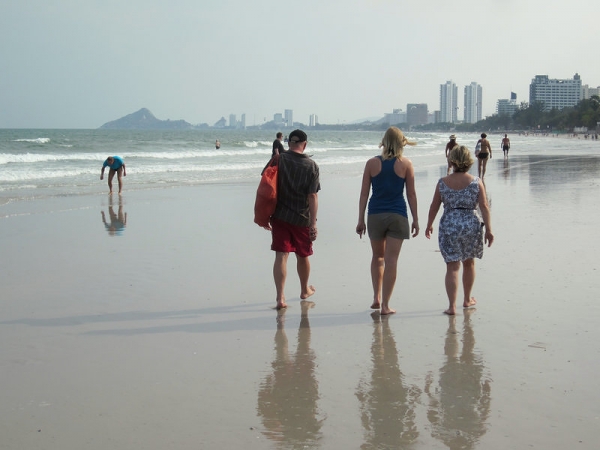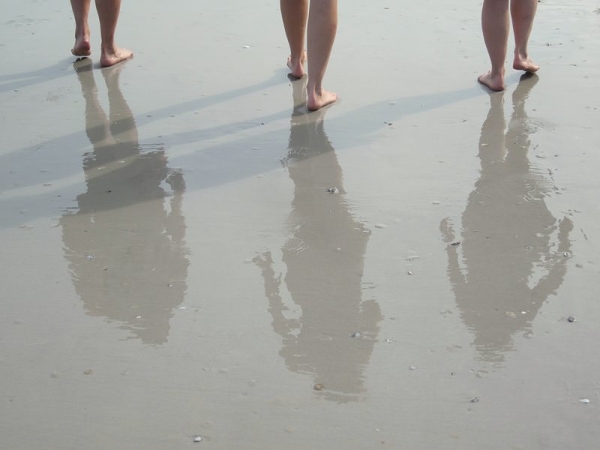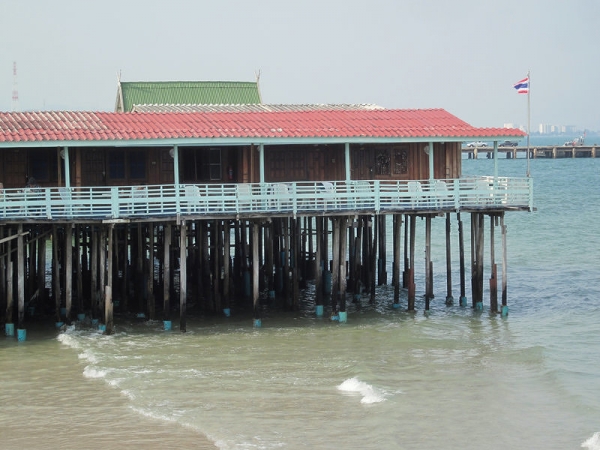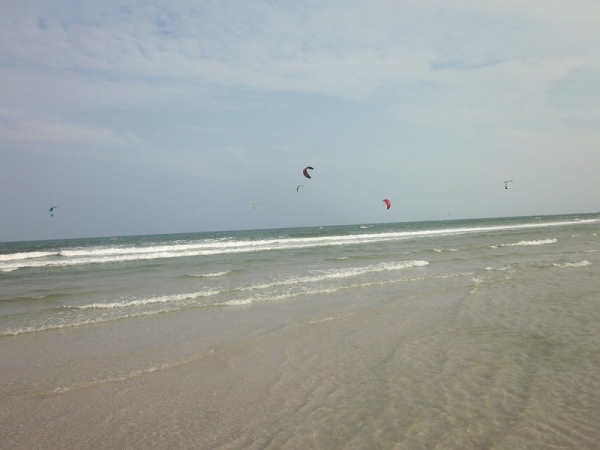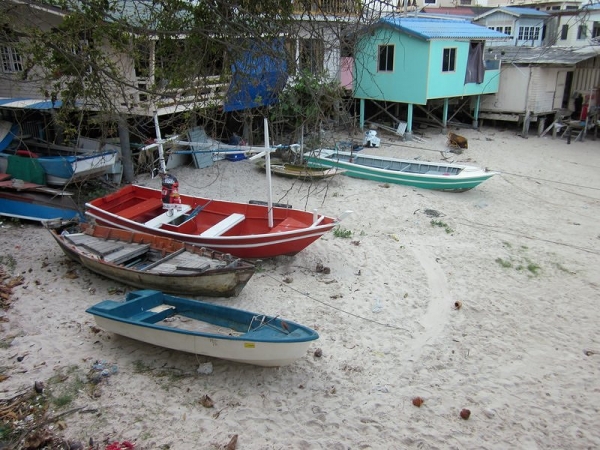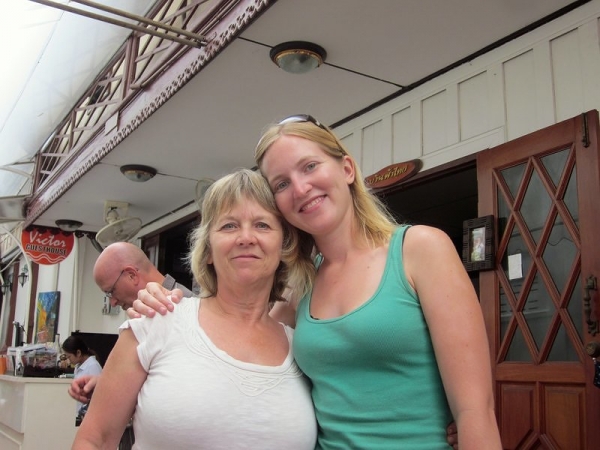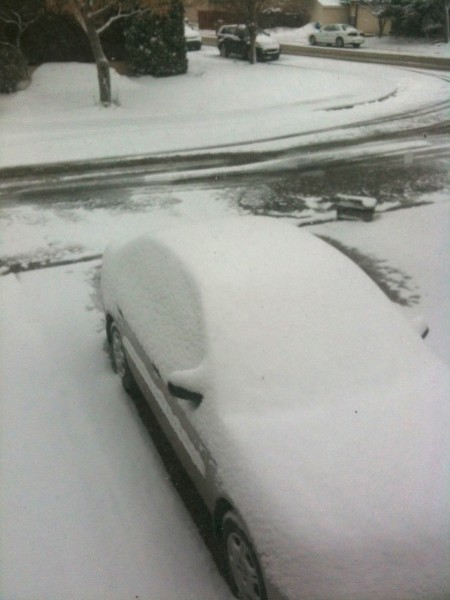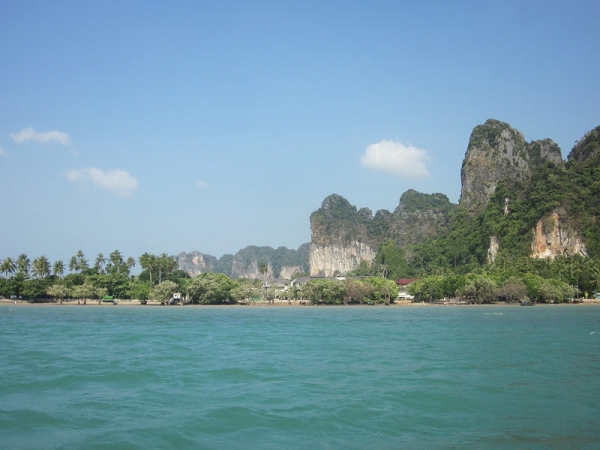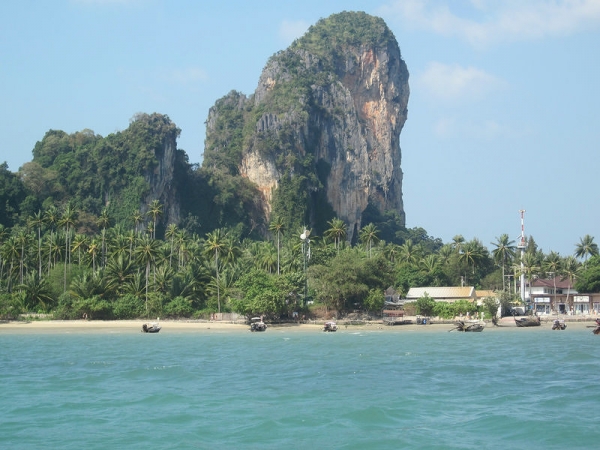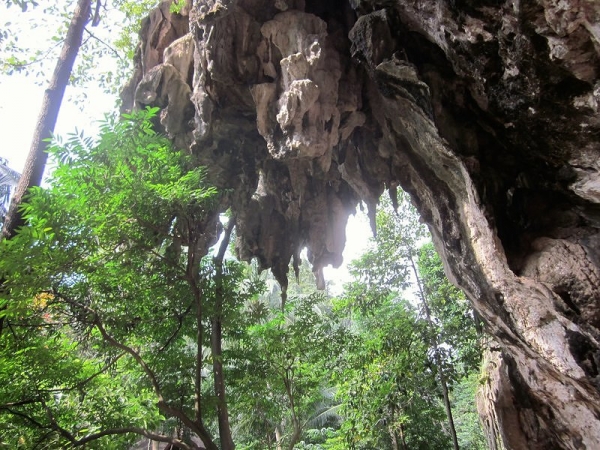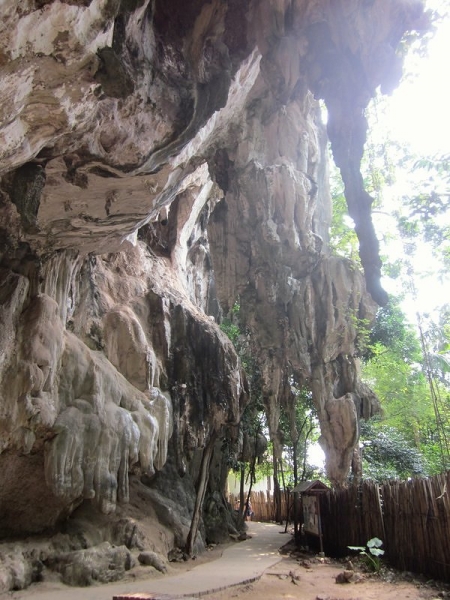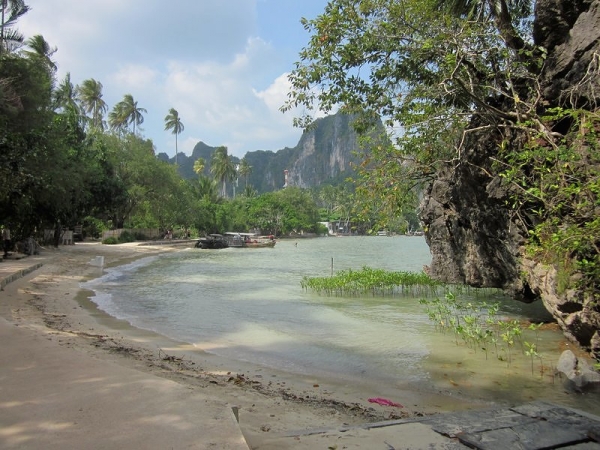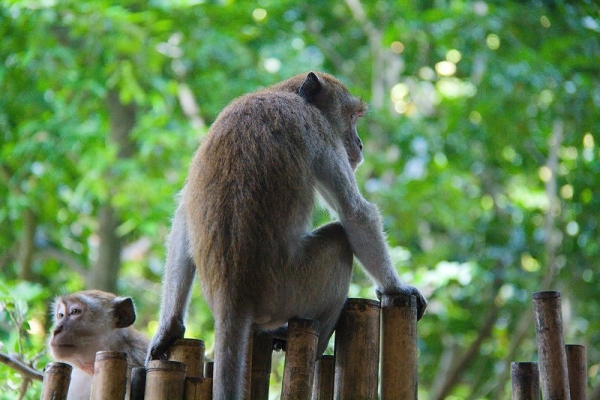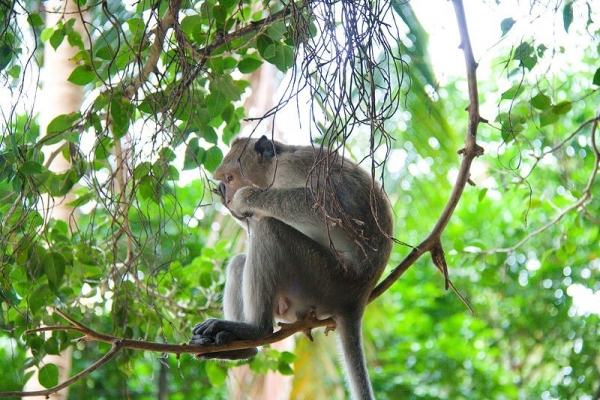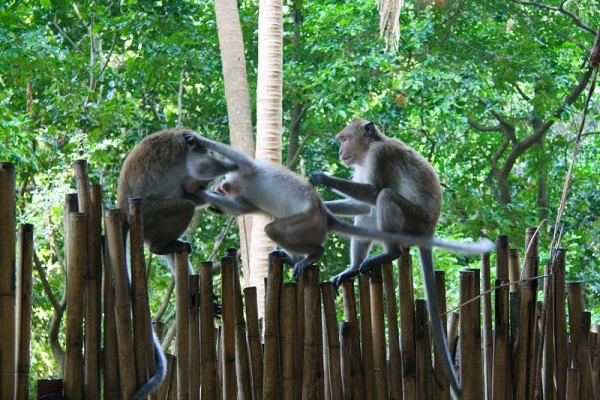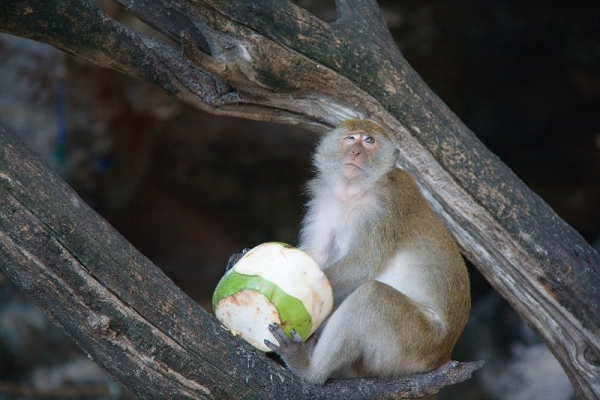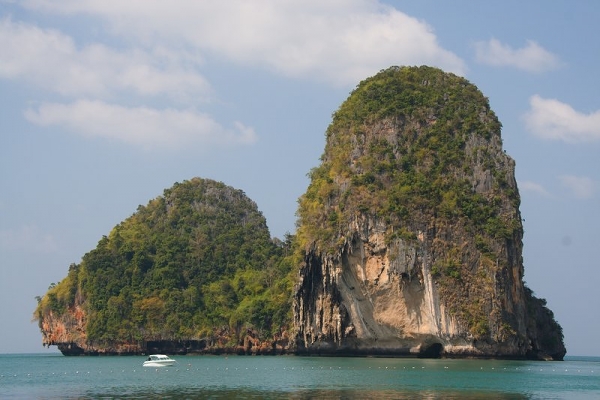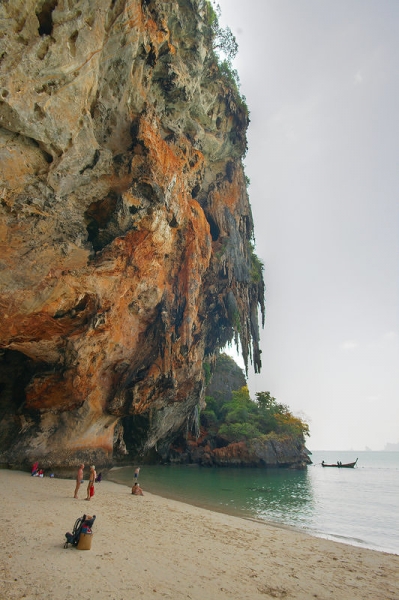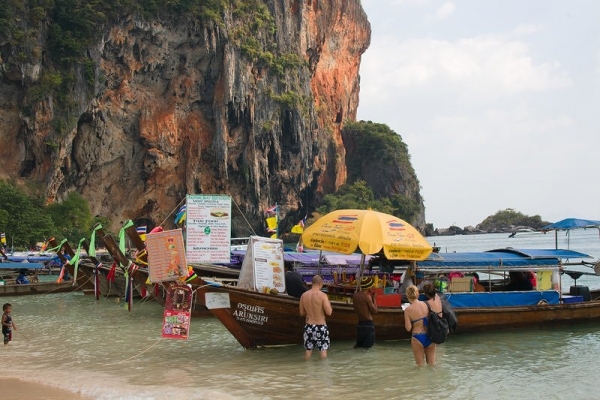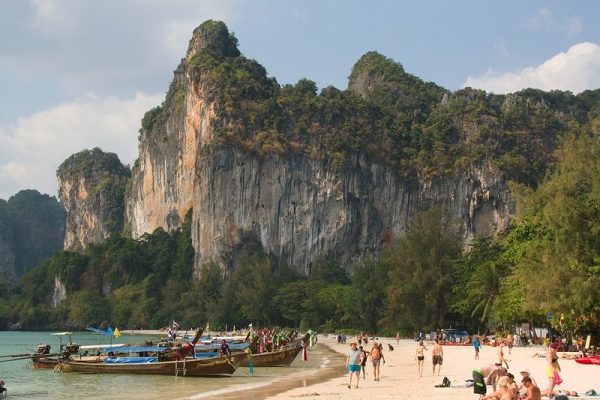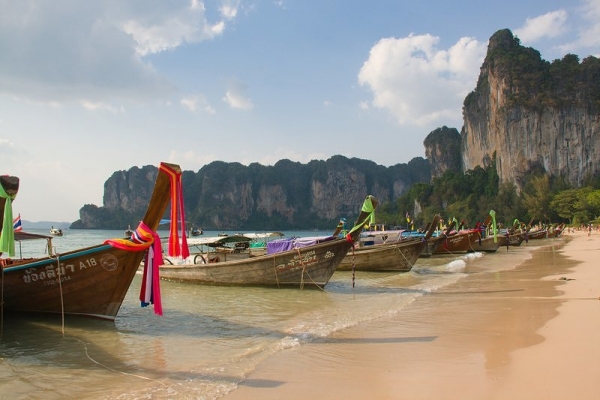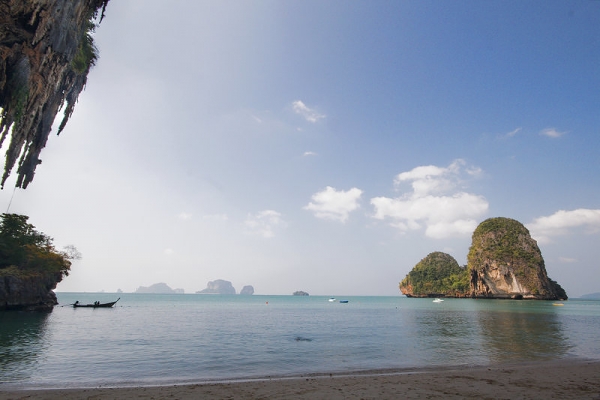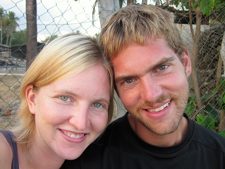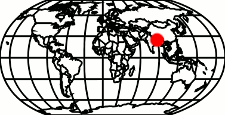It’s impossible to travel Southeast Asia without at least a few obligatory stops in Bangkok – the transportation hub of Thailand. We made six separate stops in the city, and spent a total of 14 days. We saw many of the “must-sees” (like Khaosan Road, the Grand Palace, China Town, and the Reclining Buddha) and a few more off-the-beaten path destinations.
Our Explore Bangkok series will share a few of the photos and stories that came along with our explorations. First up – the Grand Palace and Wat Phra Kaew (better known as the Temple of the Emerald Buddha).
Statue at the Grand Palace
Just about every Bangkok tourist visits the Grand Palace, but this doesn’t mean it’s easy to get to – there are plenty of people that will try to change your plans along the way. We were sleeping just off Khaosan Road, which made it an easy walk to the Palace.
If you are staying farther away or just don’t want to walk, I strongly advise you to take a metered taxi. I haven’t seen a Bangkok tuk tuk yet that isn’t a complete rip-off (they are always priced higher than the taxis, even after negotiations) and if the taxi driver tries to get you to agree to a lump sum fare, it will always be about 3-10 times the price of a metered fare. We have had to ask as many as ten cabs to turn on their meter before a driver would agree to do it, but the savings were worth the extra time and hassle.
Scam 1
Not far into our walk, a man waved us over to talk. He introduced himself as a city worker and after asking where we were going, went on to tell us that the Grand Palace was closed for the day. He had us pull out our map and suggested some alternative sights to see across town. He was also so kind as to give us advice about how not to get ripped off by the tuk tuks drivers. The key, according to him was to watch for the tuk tuks with a white front license plate. They were the cheap ones.
He kept us talking long enough for his friend, a tuk tuk driver with a white front license plate, to coincidentally drive by and stop for a quick visit. Also ever so helpful, the driver suggested a number of sites we could see (except the nearby Grand Palace which was supposedly closed).
We knew a scam when we saw one, said thank you and goodbye, and continued on our way. As we rounded the corner, we saw throngs of people entering and leaving the Grand Palace gates, despite its apparent closed status.
Scam 2
We also encountered an elderly woman surrounded by pigeons on our walk. She had bags of bird seed and held them out for us. Mike and I quickly refused and tried to keep walking, but my Mom and Terry slowed down to talk to her. As soon as we stopped, she started ripping open the bags, forcing our hands open, and pouring the seed into our palms. Terry pulled out some money to offer her. She smiled, refused, and kept handing over more birdseed. We threw the seed on the ground, the pigeons gobbled it up, and she asked for her bags back. Then, she demanded something like 150 baht ($5 CAD). I guess the reason she refused Terry at the start was he wasn’t offering enough money. Angered at the scam, we all pulled out a few baht and handed it to her so she would let us go – what we offered was no where near what she thought it should be. I’m pretty sure she was cursing us in Thai as we walked away.
The Grand Palace
After leaving the scams behind us, we finally arrived at the Grand Palace. As the name implies, it is indeed grand. The ornamental work is stunning and the closer you look, the more there is to see. It’s impossible to take everything in at a glance, so plan on giving it more than a cursory walk-through.
Grand Palace
The palace was the official residence of the kings of Siam (and, later, Thailand) from 1782 until 1925. It was also the location of the administrative seat of the government. Now, it is used for official events and as a tourist attraction.
Inside the Grand Palace grounds
We didn’t see the king
Today, the king lives at Chitlada Palace, which we spent another whole day visiting (we were walking around looking for street food and thought that it was a park and, thus, a great place for food vendors. We learned otherwise when the guards turned us away from the gate)…
Outside the king’s residence, Chitlada Palace
Outside the king’s residence, Chitlada Palace
The grounds
The grounds and exteriors of the Grand Palace buildings are impressive, which is good since most of the building themselves are off-limits. The throne room was closed to the public the day we visited (as I later found, it’s always closed on weekends), but that didn’t stop everyone from pressing up to the windows to see the decadence.
Also located in the Grand Palace grounds is Wat Phra Kaew – the Temple of the Emerald Buddha. This is one of the most sacred temples in Thailand. Despite all the fuss about it, the Emerald Buddha is relatively small (about 66 cm or 26 in tall). All the gold around its case almost overwhelms the statue itself. It is not actually made of emerald, but rather its carved from a single stone of jade. Three times a year, the statue’s golden outfit (made of real gold, of course) is changed to mark the change of seasons.
Emerald Buddha
The story behind the statue is that in 1434, lightning struck a Chedi (a.k.a. a Stupa – a mound-like structure containing Buddhist relics) in the northern Thailand province of Chiangrai. This lightning strike revealed a stucco Buddha statue inside. The abbot of the temple notice that the nose was green where the stucco had flaked off. He removed the stucco to reveal the green jade image inside. The statue made its rounds over the years – Chiangrai, Chiangmai, Lampang, Prabang (Laos), Vientane (Laos), Thonburi, and finally Bangkok. The Temple of the Emerald Buddha has been its home since 1784.
There are a few museums within the palace grounds – the Queen Sirikit Textiles Museum, where we learned about the production of silk and everything that the royal family has done to encourage the rural economies of Thailand. Here, mom and I got to play dress up and try on the national Thai dress.
The dress style was created by Queen Sirikit in the 1960’s to combat the westernization of the Royal dress that had been evolving over the years. Using photographs and designs from the past, Queen Sirikit and her team of designers created and popularized this throwback to traditional Thai fashions and created a national dress equivalent to India’s sari and Japan’s kimono.
The national Thai silk dress
There is also a number of other museums. To name a few, there is the Pavilion of Regalia displaying a number of royal decorations and coins, a weapons museum, and the Musuem of the Emerald Buddha Temple (where you can see the seasonal dress the Buddha is not currently attired in, as well as various other artifacts). Not really a museum, but interesting none the less, was the scale model of Angkor Wat, which could be found among the fish ponds.
While the Grand Palace is definitely dazzling, not all that glitters is golden. The crowds are immense, the heat is oppressive (especially with all the people about), the majority of the grounds & buildings are closed to the public, and the price tag is hefty – 400 baht (~ $13 CAD).
Crowd at the Grand Palace
The palace is open 8:30 – 3:30 every day, unless there’s a royal ceremony or other official function taking place (like I mentioned before, this is rarely the case so check it out for yourselves). The audience halls and throne rooms are open on weekdays, but closed on weekends – keep this in mind when planning your visit. And don’t forget to wear suitable attire – no bare feet (wear shoes),no knees, no shoulders nor cleavage allowed (you can rent a pair of pants on the grounds if you like, but don’t lose your rental slip unless you were in the market for some over-priced, ugly, ill-fitting trousers anyway).
Sign at Grand Palace, indicating unacceptable dress
More photos for you…
Changing of the guards
Check out that detail!
Beautiful door
These guys…
… are in love!
Love the woman that snuck her way into this shot!
